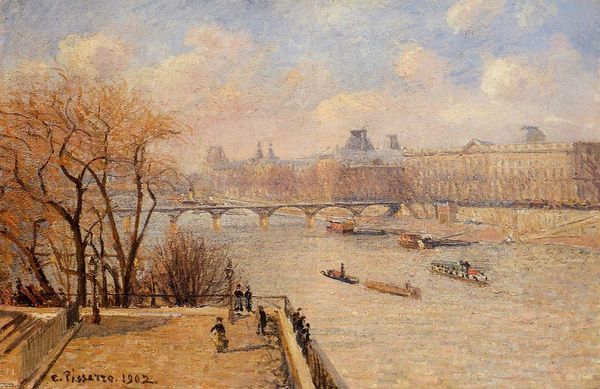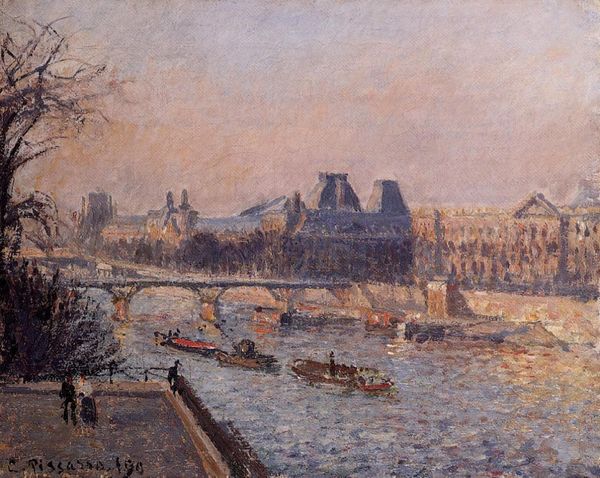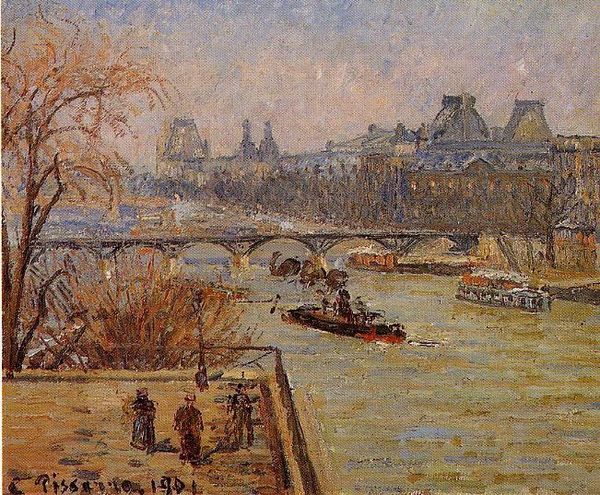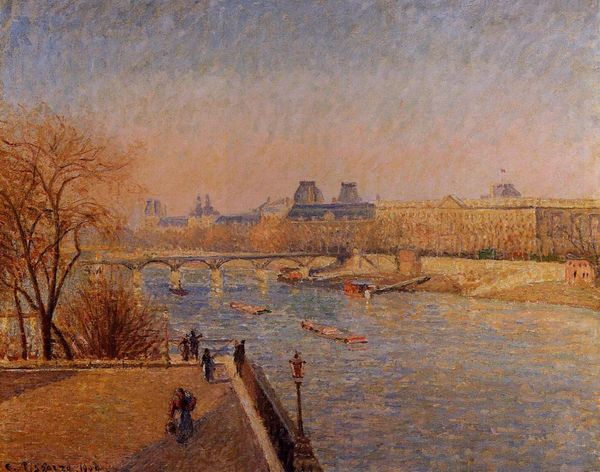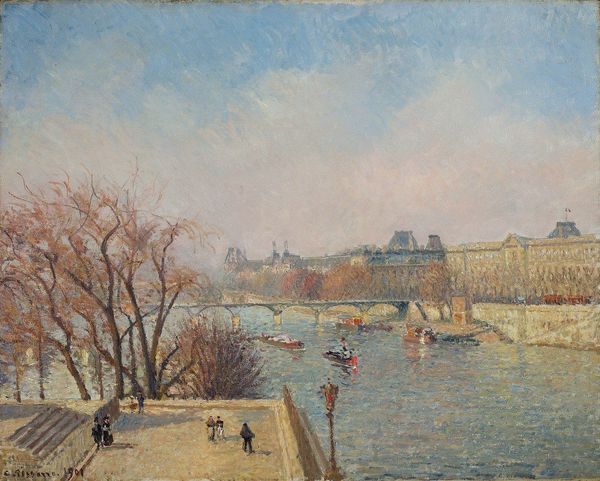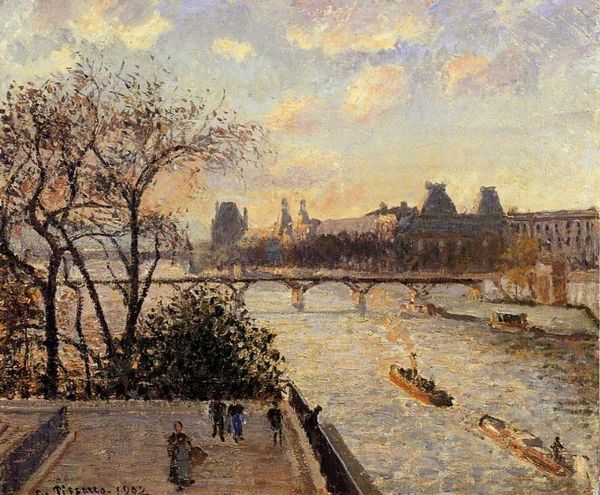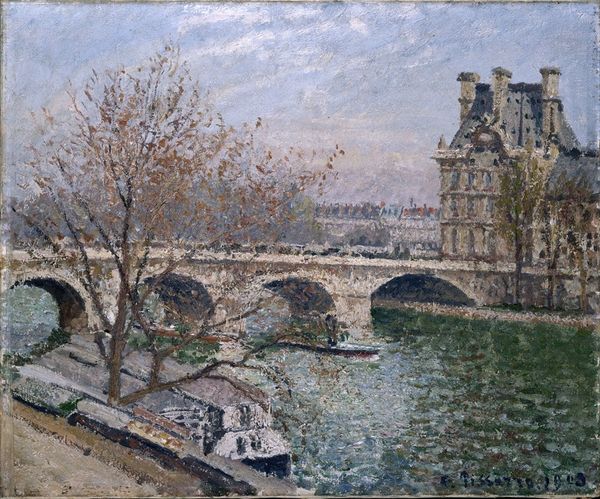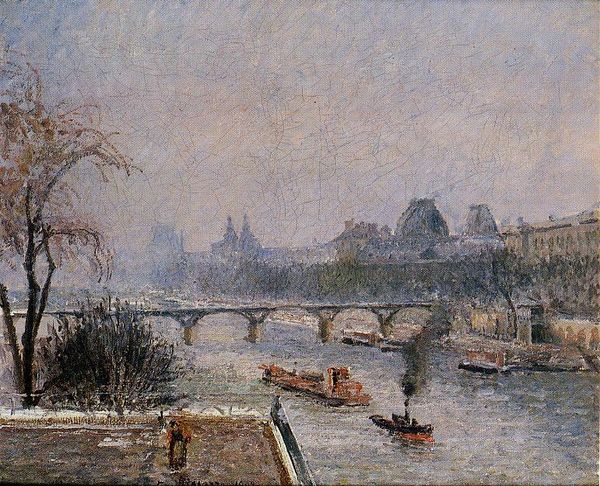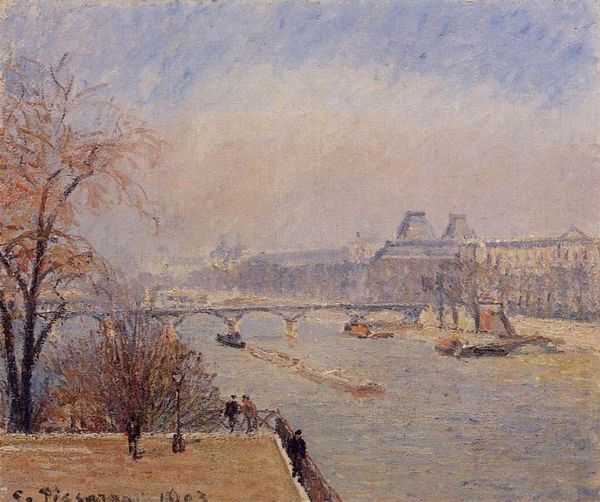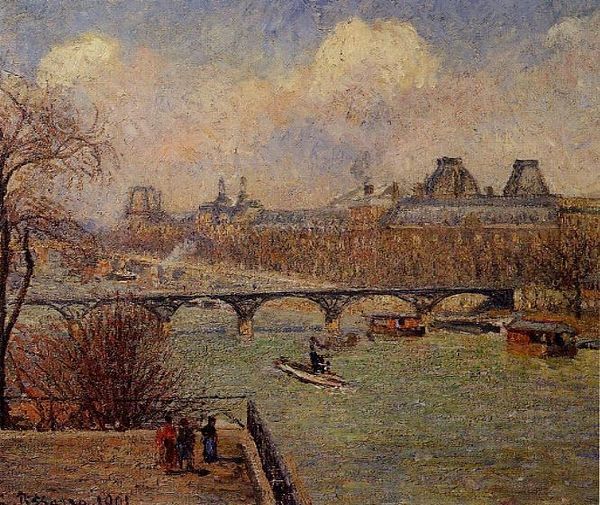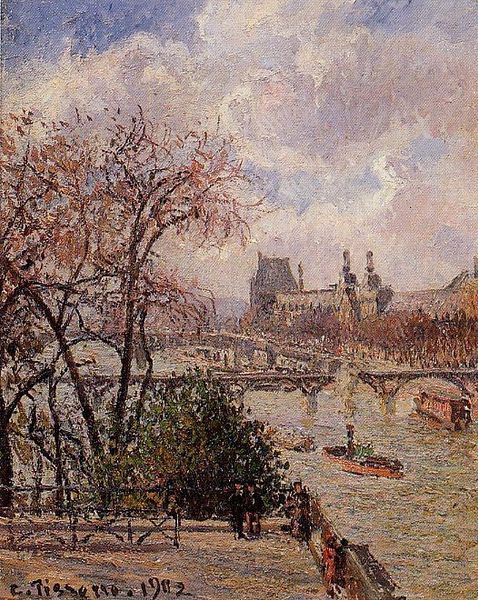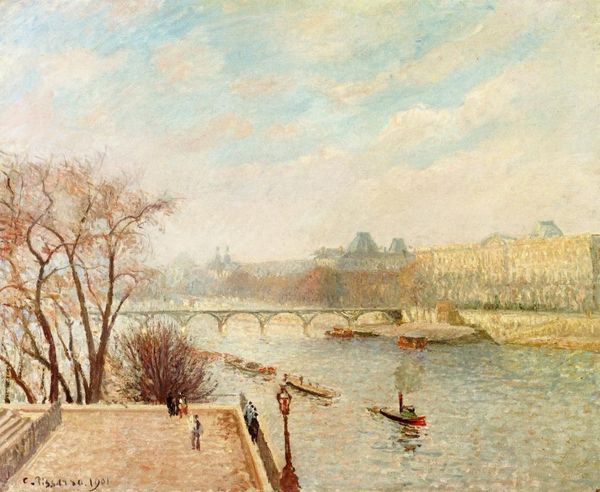
Copyright: Public Domain: Artvee
Editor: Here we have Camille Pissarro's "Le Louvre" from 1902, an oil painting capturing a cityscape. I'm struck by its muted colors and the way the brushstrokes seem to dissolve the architectural details. What do you see in this piece beyond just the pretty picture? Curator: Well, Pissarro was deeply engaged with representing modern life, and I see this cityscape as a commentary on urbanization and its impact on society. The Louvre, a symbol of art and power, sits in the background, almost overshadowed by the bustling river and burgeoning city life. What do you make of that contrast? Editor: It feels like he’s suggesting that everyday life, the movement and energy of the city, is just as important, maybe even more so, than the grand institutions. Curator: Exactly. And it's worth considering Pissarro's own political leanings. He was an anarchist, deeply critical of social hierarchies. Doesn’t this painting, with its emphasis on the working river and the ordinary people strolling along the bank, feel like a quiet subversion of those hierarchies? Who do you think this work was made for? Editor: Maybe for people who felt like they weren't represented in traditional art? People who were part of that changing cityscape? Curator: Precisely. Pissarro wasn’t just painting a pretty picture, he was actively participating in a dialogue about who deserves to be seen and valued within society. Editor: I never would have considered the social commentary within this piece! I learned so much today. Curator: And I am thrilled that we can see through this new lenses. There’s always more to discover in art, especially when we look beyond the surface and delve into the sociopolitical context.
Comments
No comments
Be the first to comment and join the conversation on the ultimate creative platform.
